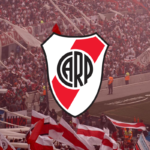


Roaming the streets is a popular pastime in Buenos Aires. But one rarely stops to ponder the namesakes of this great city’s broad avenues and cobbled thoroughfares. Taking a closer look into the history behind these street names, here’s one walking tour that is not only beautiful, but educational as well.
Imagine. You’re leaving Asia de Cuba (a posh nightclub in the barrio of Puerto Madero). It’s 7:30am, no change for the bus, no cash for a taxi. This is your perfect moment to take a (very) long walk through Buenos Aires on your way back to your apartment in Palermo. Rather than thoughtlessly wandering the streets on your way home, walk with me, and ponder your way through this famous section of Buenos Aires.
Starting from Asia de Cuba, our trek begins on the street Pierina Dealessi, named for an Italian-born silent film actress of the 1940s, and continues across the Puente de la Mujer (Woman’s Bridge), the sleek footbridge designed by Spanish architect Santiago Calatrava. Even at this early point in our sojourn, you begin thinking to yourself, “Why are all of the streets and landmarks in this area dedicated to women?” Well, during the 1990s movement to transition this dock neighborhood into a high-end real estate and tourist zone, there was also an official government decree to increase the number of streets honoring the women of Argentina.

Once across the bridge we make a right on Juana Manuela Gorriti, named for a writer who was also the daughter of one of the signer of the Argentine Declaration of Independence. Interestingly, Gorriti’s family was expelled from Argentina during the monumental civil dispute over the unification of Argentina during its earliest years as a nation. The family moved to Peru, and once there, Juana Gorriti became a journalist who fought for a more modern role for women in society.
Turning left on Macacha Guemes, a street named for a revolutionary woman from the province of Salta. This salteña was born into one of the most powerful families in the area, and in her lifetime she helped to supply uniforms to soldiers for battle, and while working so closely with these soldiers, collected secret information that proved crucial to the battle’s conclusion.
From Macacha Guemes, we will cross Alicia Moreau de Justo, slowly because this street’s namesake is an interesting one. A socialist, pacifist, and the founder of the feminist movement in Argentina, Alicia Moreau de Justo was one of the first female medical students at the University of Buenos Aires. As an activist for many issues, including women’s and worker’s rights, education, and anti-war campaigning, Alicia Moreau de Justo is one of Argentina’s iconic female figures. Wondering if she is related to the also famous Juan B. Justo? You’re right! The two met as members of the Socialist Party, fell in love and eventually married. Alicia is also honored every year as the namesake of the Woman of the Year award. In 2008, this prestigious honor went to the show Vidas Robadas (Stolen Lives), which dealt with the issues relating to human trafficking.
Taking a right at Eduardo Madero, we are now walking along the street named for a businessman responsible for, you guessed it, the original port that is now Puerto Madero. Traveling along Madero, we will approach the back side of the Casa Rosada, and then take the round about away from Puerto Madero and crossing into the area of El Centro (downtown Buenos Aires) and turn onto Avenida Leandro Alem. Alem is an important figure in Argentine politics and important figure of Union Civica Radical (UCR), today one of the most prominent political parties in Argentina and part of the opposition to the Peronist Justicialista Party. After a tumultuous ride in the Senate, Alem committed suicide in 1896 as his influence was dwindling before seeing Hipolito Yrigoyen become the first Radical president.

Alem cuts through the heart of the downtown and brings us to San Martín. Here Alem changes names to Libertador. Although this is not apparent to the Argentine History novice, libertador is an alias of the great South American freedom fighter, San Martín. Here we should rest a moment on a park bench in the Plaza, and take the chance to soak in the greatest of figures in Latin American history. To learn more about San Martin, check out the new film documenting his liberating escapades San Martín (starring Rodrigo De la Serna, the actor who played Che’s buddy in The Motorcycle Diaries). The short version of this story is that Argentine-born San Martín was a military expert and the leader who is given partial responsibility for liberating Argentina, Chile and Peru from the colonial reigns of Spain.
Next, let’s travel past Retiro, the train and bus station on our right, and under Puente Arturo Ilia, named after the rural doctor-turned-politician. Ilia was elected President in 1963 as a member of the UCR (the Radical Party). Ilia was elected to the presidency during a period when the Peronist party was banned from presenting candidates, and as a result, faced strong opposition from workers unions. His presidency lasted until 1966 when he was removed from power by a military coup. The subsequent de-facto governments would rule Argentina until 1973 and end with an election that included the Peronist party and led to Peron’s return from exile in Spain.
Where Libertador splits, we will take the low road Presidente Figueroa Alcorta. Interestingly, Alcorta was elected Vice-president but assumed the presidency after Manuel Quintana’s death. He was president during the rise of social unrest led by the anarchist and union movements of the early 1900s. The violent police suppression of the May Day riots led to the anarchist Simón Radowitzky’s horse and carriage bomb that killed the chief of Police Falcón.
This allows us to pass by the Law School, and the site of the future Central Park of Buenos Aires, which takes us under the footbridge or peatonal. Now’s when we could really make your head spin, get you lost, and make you never want to study history again. Instead we will stick to the big players and let you mindlessly stroll down Alcorta until you get to Sarmiento who, like San Martín is a tough one to sum up: writer, president, and education activist is enough for our quick walk up to Plaza Italia.
Not home yet? You could stop here, take a nap in the Carlos Thayes Botanical Garden with the gang of wild cats, or power through, taking a right on Santa Fe and heading up Juan B. Justo, the famous socialist, or down Luis Maria Campos, early Argentine military man who has a massive headstone in the Recoleta cemetery.
Here’s when you start to think, there’s a lot to learn about Argentina… all the more reason to stick around and pay attention to those signs.
(US) 910 795 2992
(AR) +54 9 11 —- —-
©Copyright 2025 Landingpadba, LLC